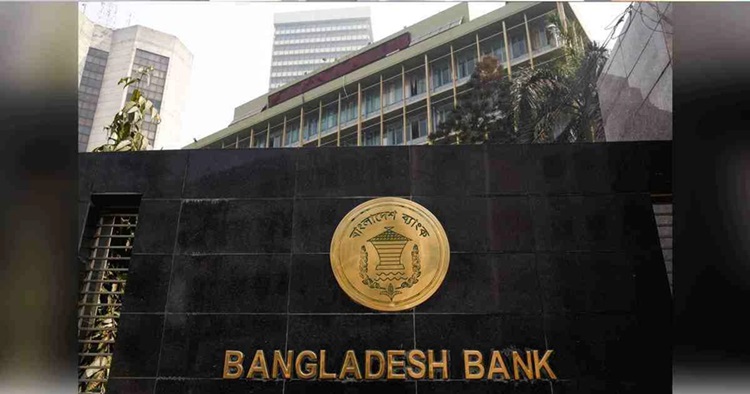Bangladesh Bank’s new agro-rural credit policy fails to excite farmers


Bangladesh Bank’s latest revision of the agro-rural credit policy announced on Tuesday failed to excite farmers, who are in need of financial support more than ever before being hit by recurring disasters and inflation.
The credit policy is annually revised and the latest revision of the policy was completed with nine additions or changes, none of which, however, dealt with core concerns of the farmers.
Farmers complain about inadequate allocation for agricultural loans and its existing high interest rate, which varies between 5 and 8 per cent, a burden for all farmers for their crops not fetching legitimate prices.
For a long time Bangladesh's mostly subsistence farmers are trying to prop up their lives, particularly after disasters or crop failures or price falls, by turning to microcredit lenders or local loan sharks to access some cash. Farmers end up being caught in a debt cycle.
The central bank’s credit policy does not say anything about relieving these farmers caught in the debt cycle. The overall increase in loan allocation is insignificant while there is a high possibility of the allocated loan never reaching farmers who really needed it.
“Agricultural loan is a burden,” said Abu Bakar Siddique, an agro-entrepreneur from Mymensingh.
“Even after going through hurdles to get loans from private banks, repaying them often forces us to sell farmland. Interest rates, though initially low, keep increasing over time. Crop damage and fish farm flooding make repayment almost impossible,” he said.
Abu Bakar represents the unfortunate lot of farmers who often fail to repay their loans. After failing to pay five installments in the last five months against Tk 12 lakh loan, Bakar was recently served a notice by a private bank, warning him of a police case unless he soon cleared his installments.
“We barely get our production cost back from selling crops, let alone making money to repay loans with high interest,” said Samsuddin, another farmer from Mymensingh.
The inevitable harsh fiscal reality often compels farmers to switch their profession by taking agricultural loans. Many farmers set up makeshift retail shops or find a better way of making money.
Farmers in Barishal’s Bakerganj upazila said that many of their colleagues took agricultural loans and invested it in non-farm ventures such as retail shops or land trading.
Farmers have long been demanding interest-free farm loans.
Currently, Bangladesh Bank instructs banks to lend at a concessional rate of 4 percent for certain import-substitute crops, while most other farm loans carry 5–8 percent interest—sometimes more.
The central bank guidelines allow banks to set their own rates, within the ceiling it prescribes.
Abdul Bayes, agricultural economist and a former vice-chancellor of Jahangirnagar University, however, warned against a blanket interest-free policy.
“If loans are interest-free, funds will end up in the wrong hands. Banks incur operating costs. While interest must remain farmer-friendly, the government should ensure proper oversight,” he said.
Bayes recommended targeted subsidies, longer grace periods, and repayment relief in disaster-hit areas, stressing that crop losses in one season should allow farmers up to 12 instalments to repay, without facing legal harassment.
Private bank officials admitted they often lack the field-level capacity to screen and monitor agricultural loans, with many not having rural branches in upazilas and unions—making it harder to reach small and marginal farmers, who avoid travelling to urban centres for loans.
Under Bangladesh Bank’s crop hypothecation policy, marginal farmers owning 0.49 to 2.47 acres can secure loans using crops as collateral. But many private banks are reluctant, saying it is difficult to recover dues from crop sale proceeds from a farmer.
Private bankers' view exposes another aspect of farmers’ hardship. Crop prices fall routinely during harvest, forcing farmers to sell their crops at throwaway prices or dump them. Lack of storage capacity is the reason behind the situation.
The Bangladesh Bank credit policy has nothing to help farmers store their crops.
Ripon Kumar Mondal, professor of agricultural economics at Sher-e-Bangla Agricultural University, said: “Many farmers are also unaware of loan terms or application procedures, leading them to seek credit from NGOs or specialised banks instead.”
Anisuddin Ahmed Khan, independent director of Trust Bank, said that the lack of capacity of banks often causes them to disburse loans through “reputable NGOs rated by the Credit and Development Forum (CDF).”
He noted that private banks’ agricultural loan recovery rate is one of the highest and stands at 95 percent.
Bangladesh Bank on Tuesday set the target of disbursing Tk 39,000 crore as loan in FY2025-26, which is Tk 1000 crore higher than the year before.
The loan disbursement target last year was Tk 38,000 crore. Of which Tk 37,326 crore was disbursed.
A total of six state-owned commercial banks, two specialised banks, 42 private commercial banks and eight foreign commercial banks disbursed 98.23 percent of the total target in FY2024-25.
In 2023-24, the agro loan disbursement target was Tk 35,000 crore. The actual disbursement was Tk 37,153 crore—up by Tk 4,324 crore compared to loans disbursed in FY2022-23.
Some of the key additions to the policy are inclusion of Prabashi Kallyan Bank in the farm loan programme, CIB reports mandatory for any amount of agricultural and rural loans disbursed, relaxing charge document requirements for loans up to Tk 300000 in the fisheries and livestock sectors, raising the allocation for the livestock sector from 15% to 20%, and newly setting a 2% allocation for the irrigation and agricultural machinery sector.
The policy also advises using information stored in crop zoning systems or farmer apps on region-based crop production or production potential, expanding the scope of contract farming, and incorporating several new crops into the loan guidelines such as cucumber, taro stolon, jackfruit, beetroot, black cumin, spice cultivation in sacks, and date molasses production.
The central bank expressed confidence in the press release that these measures will bolster macroeconomic stability, ensure a steady food supply, and contribute to sustainable rural development by increasing agricultural production.
In official estimates, Bangladesh has about 1.69 crore farming families, mostly subsistence farmers. Last year, loans were availed by more than 38.19 lakh farmers.
Agriculture accounts for 11 per cent of GDP in 2024 after decades of gradual decline. In the 1960s, the contribution to GDP of the agricultural sector was about 62 per cent.
Agriculture accounts for over 45 per cent of employment in Bangladesh.
